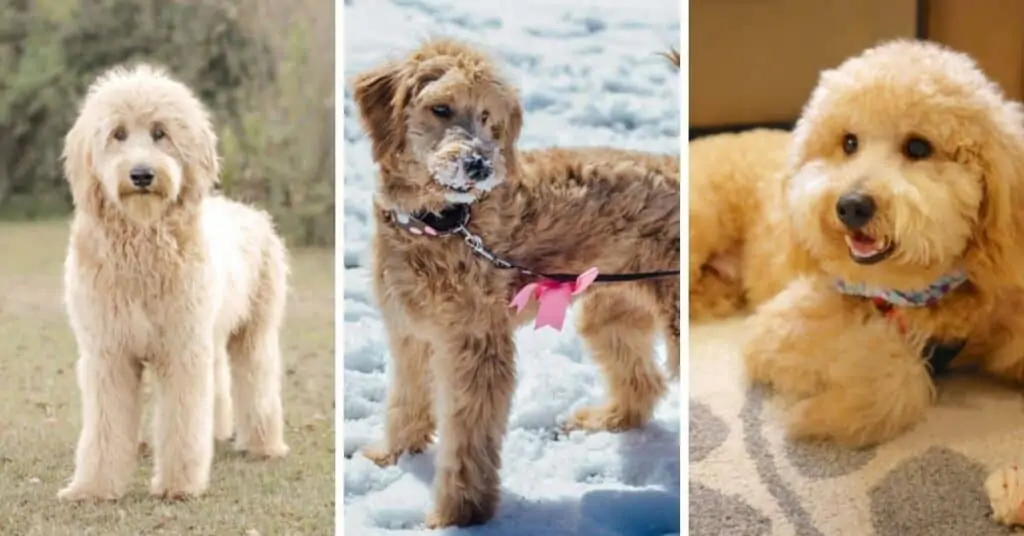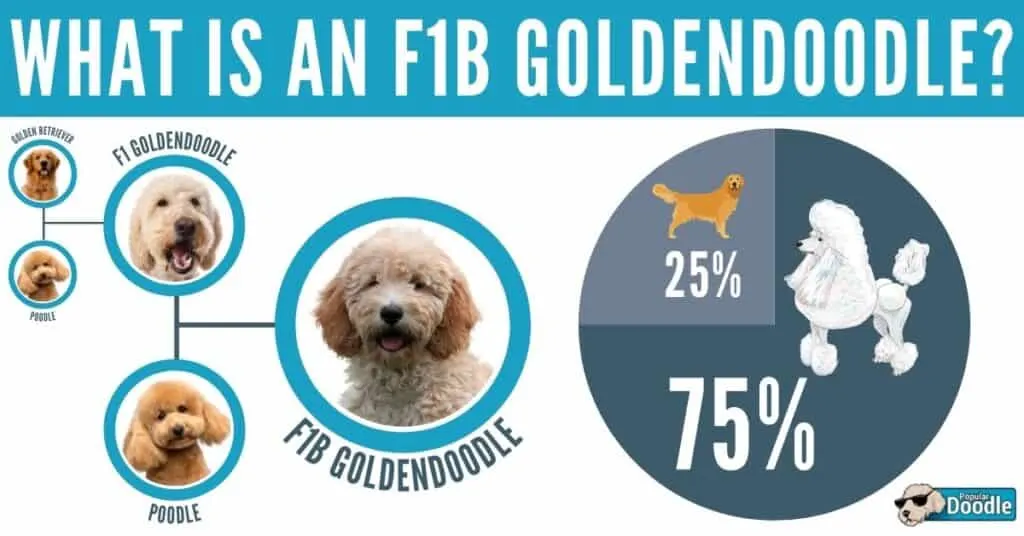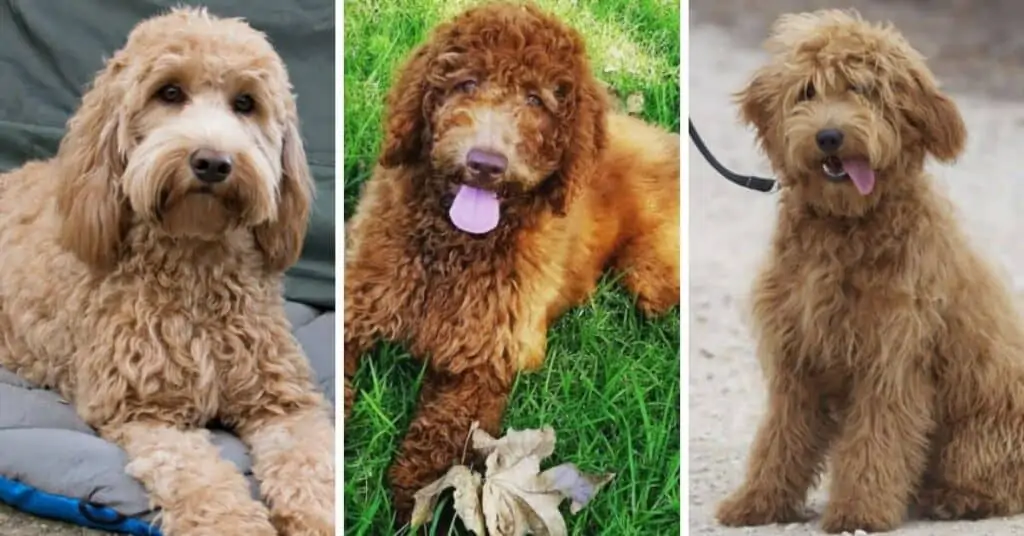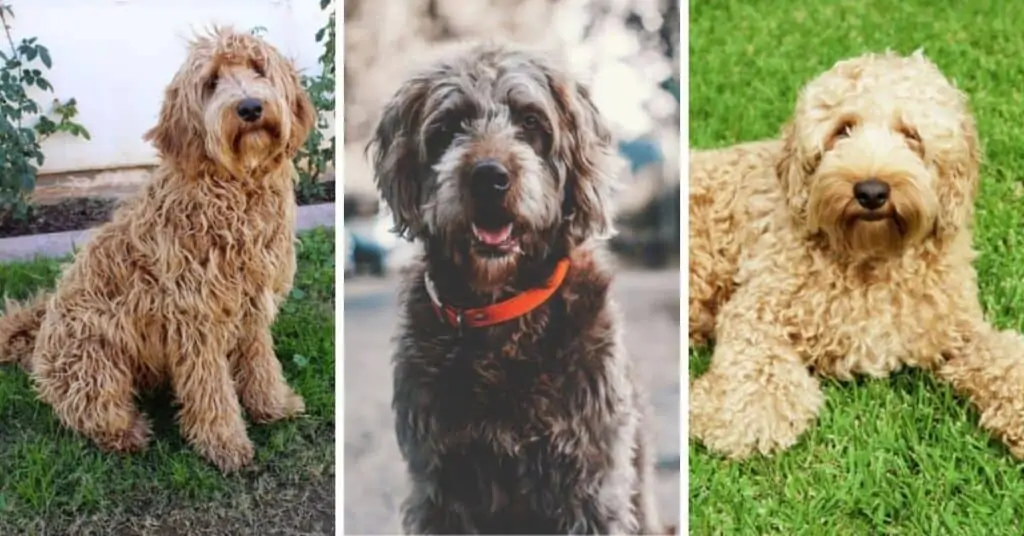
What is a Goldendoodle Dog?
Heritage:
Golden Retriever Poodle Mix
Other Names:
Groodle, Curly Golden, Curly Retriever,
Golden Retriever Poodle Mix Breed History
Golden Retriever Breed History:
The history of the Golden Retriever begins around 1840 when Dudley Marjoribanks, a wealthy businessman and Baron from Scotland set on a mission to create the ultimate gundog. He wanted a breed that could excel in the rainy climate and rugged terrain of the Scottish Highlands. To accomplish this, he crossed his “Yellow Retriever” with the Tweed Water Spaniel, a breed which is now extinct. Marjoribanks perfected the breed for over 50 years, keeping meticulous notes and records of his work.
Bloodhound and Irish Setter were eventually added to the mix to produce the Golden Retriever as we know it today. In the early 1900s, the breed made its way to the United States, but it didn’t take off in popularity until the 1970s, in part thanks to the publicity of President Gerald Ford’s Golden Retriever named Liberty.
There are three varieties of Golden Retriever—American, English, and Canadian.
Poodle Breed History:
While commonly associated with the French, the Poodle actually originated as a duck hunter in Germany over 400 years ago. In German, “pudelin” refers to the splashing in water that the dogs would do to retrieve waterfowl. The Poodle’s curly, weatherproof coat as well as its natural swimming ability and high intelligence made it an excellent retriever.
Eventually, Poodles made their way from the lake to the life of luxury as they were the breed of choice by French nobles, and eventually royalty across all of Europe. To this day, the Poodle is still the national dog of France. The entertainment industry then caught on to the Poodle’s showy looks, intelligence, and ease of trainability and gave them a prominent role in circus acts across the world.
While the Poodle started out as the “standard” variety, eventually the miniature and toy variations were bred. The Toy Poodle started in the United States in the early 20th century to be a city-dwelling companion dog. Due to the many positive personality traits and its hypoallergenic coat, Poodles are now commonly bred with a wide variety of other breeds to produce the “designer” hybrid dogs known and loved by many as “doodles.”
Goldendoodle Breed History:
The Goldendoodle breed was first developed by Monica Dickens, the great-granddaughter of the famous writer Charles Dickens, in 1969. Its popularity didn’t rise until the 1990s after Labradoodles started being bred to train as guide dogs for the visually impaired who needed a hypoallergenic dog. Goldendoodles followed suit and quickly caught on as one of the most popular varieties of Doodle!
Golden Retriever Poodle Mix Appearance & Grooming
How Big Do Goldendoodles Get?
The size of the Goldendoodle breed is determined mostly by whether the Poodle parent was a standard, miniature, or toy. On top of that, the gender of the puppy and the genetics of the parents play important factors as well. There are three basic sizes of Goldendoodles—toy, mini, and standard.
Read More: Goldendoodle Size Full Grown: How Big Do Goldendoodles Get? (Teacup, Toy, Mini, Medium, Standard)
Toy Goldendoodles are the smallest and usually weigh less than 20 pounds and stand under 15 inches tall. A Miniature Goldendoodle will weigh in at around 20-40 pounds and stand roughly 16-20 inches tall. The Standard Goldendoodle, will weigh approximately 40-85 pounds and stand about 19-25 inches tall.
In addition to those three sizes, there are two additional sizes used to be more specific. Teacup Goldendoodles describe dogs on the very small end of Toy Goldendoodles. Medium Goldendoodles describe dogs somewhere in the mid-range of Mini and Standard.
Read More: Mini Goldendoodle vs Goldendoodle: Which Size is Best? (QUIZ)
Goldendoodle Breed Coat & Grooming:
The coat of a Golden Retriever Poodle Mix can be solid or a mix of two or more colors, with the most popular being cream, red, and black. Their fur can range anywhere from shaggy, like the Golden Retriever to curly like the Poodle and usually is of medium to long length.
How curly your dog’s fur is dictates how often they must be brushed. A minimum of brushing once per week is required for the Goldendoodle breed, with the ideal frequency being every other day if not every day for more curly-haired dogs.
Read More: Short Goldendoodle Haircut Ideas: 30 Before and After Photos!
Are Goldendoodles Hypoallergenic?
Do Goldendoodles Shed?
Due to the presence of the Poodle’s genes, the Goldendoodle breed is sometimes promoted as being hypoallergenic and/or non-shedding. While this can be true, due to the unpredictability of genetics, there is no guarantee that any particular dog, or litter of dogs will be hypoallergenic. Some individuals’ allergies are more sensitive to certain breeds than other breeds, but there is no scientific evidence that shows that certain hybrid breeds are universally more or less hypoallergenic than others.
With that being said, as a rule of thumb, the larger the percentage of Poodle is in a dog’s heritage, the more likely they are to be hypoallergenic or non-shedding. So an F1BB Goldendoodle (87.5% Poodle) is more likely to be hypoallergenic than an F1B Goldendoodle (75% Poodle) which is more likely than an F1 or F2 Goldendoodle (50% Poodle).
Read More: Goldendoodle Generations Explained (F1, F1B, F1BB, F2, F2B, F2BB, F3, Multigen)
Golden Retriever Poodle Mix Health & Wellness
Goldendoodle Breed Lifespan:
A healthy and well-cared-for Goldendoodle’s life expectancy is around 10-15 years.
Goldendoodle Breed Common Health Concerns:
Goldendoodles may be susceptible to the common health problems of both the Golden Retriever and the Poodle. However, due to the genetic diversity from crossing these two breeds, the result may be a lower chance of developing these inherited health concerns.
Read More: Goldendoodle Health Issues: 10 Common Goldendoodle Health Problems to Look Out For!
Some of the more common genetic disorders to be on the lookout for in the Poodle Golden Retriever Mix include Atopic Dermatitis, Cranial Cruciate Ligament Rupture, Epilepsy, Hip Dysplasia, Patellar Luxation, Progressive Retinal Atrophy, and Von Willebrand’s Disease.
Due to the cost of treating these common health concerns, we highly encourage all dog owners invest in pet insurance. We recommend getting a free online quote from Healthy Paws Pet Insurance.
Golden Retriever Poodle Mix Temperament & Personality
Goldendoodle Breed Behavioral Traits:
Goldendoodes are super loving and affectionate animals who love being around people. As such, you shouldn’t consider this breed if your family is away from the house for large portions of the day. They are very attached and can develop separation anxiety fairly easily. They are intelligent, active, and easy-going dogs who almost never display nervousness or aggression. They’re great with pets and children alike, however due to their love of people they don’t make great guard dogs.
Ease of training Goldendoodles is moderate, with their intelligence and desire to please making most training fun and quick. However, when bored or upset, Goldendoodles have a tendency to be destructive often swallowing the evidence of what they chew which can lead to expensive and sometimes very serious vet trips. House training can be slow with this breed so patience is needed. Overall, the Golden Retriever Poodle Mix tends to be super sensitive so all training must be done in a positive manner as they don’t respond well to raised voices or harsh tones.
Goldendoodle Breed Activity Requirements:
Goldendoodles are energetic dogs and need to be both physically and mentally stimulated to keep them from using that energy in a destructive manner. An hour of exercise each day is recommended as a minimum. They love retrieving and having an outdoor space they can run freely in is a major plus.
Golden Retriever Poodle Mix Pictures











